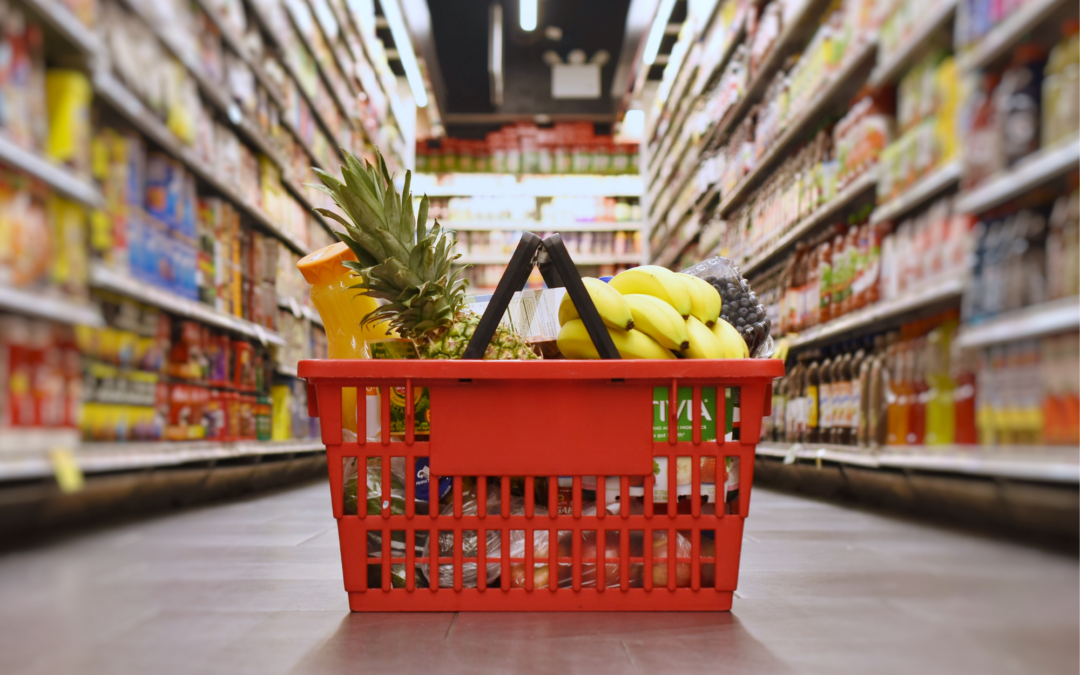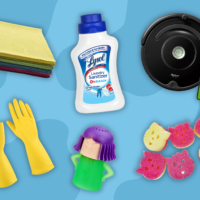Trying to save money? Cutting down on unnecessary purchases is a good start.
And while it might be simple to travel less or minimize your trips to the hair salon, going grocery shopping is something you’ll always need to do!
But just like everything else, the cost of paper goods, produce and day-to-day items has increased as well.
So I thought I’d help you out a bit and give you some of my top grocery store shopping tips to save you some money.
1. Buy generic when possible
If you look at store brand goods, you’ll often notice that the ingredients list and/or quality is almost the same… but at a fraction of the price!

So, if you’re not married to a brand name, generic could be a huge money saver.
2. Look in the right places
Did you know that the products with the highest profit margin are often at eye level on the shelves? The stores know that if something is at eye level, you’re more likely to buy it!

So when you’re doing your browsing, look up and down so as to not miss better deals.
Another place I like to shop is the end aisles! You can find some great clearance finds on these shelves and there have been multiple times I’ve scored over 70% off on things I regularly use.
You can also ask an employee if your store has a specific clearance/discount section. If you’re a Walmart shopper, they typically have a few aisles dedicated to clearance finds.
3. Sign up for rewards or loyalty programs
Most of the stores I shop at have loyalty programs that you can join for free.
And after signing up, you’ll receive things like special discounts based on your purchase history, exclusive deals and member-only discounts that deduct at checkout.
4. Clip those coupons!
I’m not one of those super savvy couponers, but I do try to check the weekly ads for my favorite stores before I go shopping.
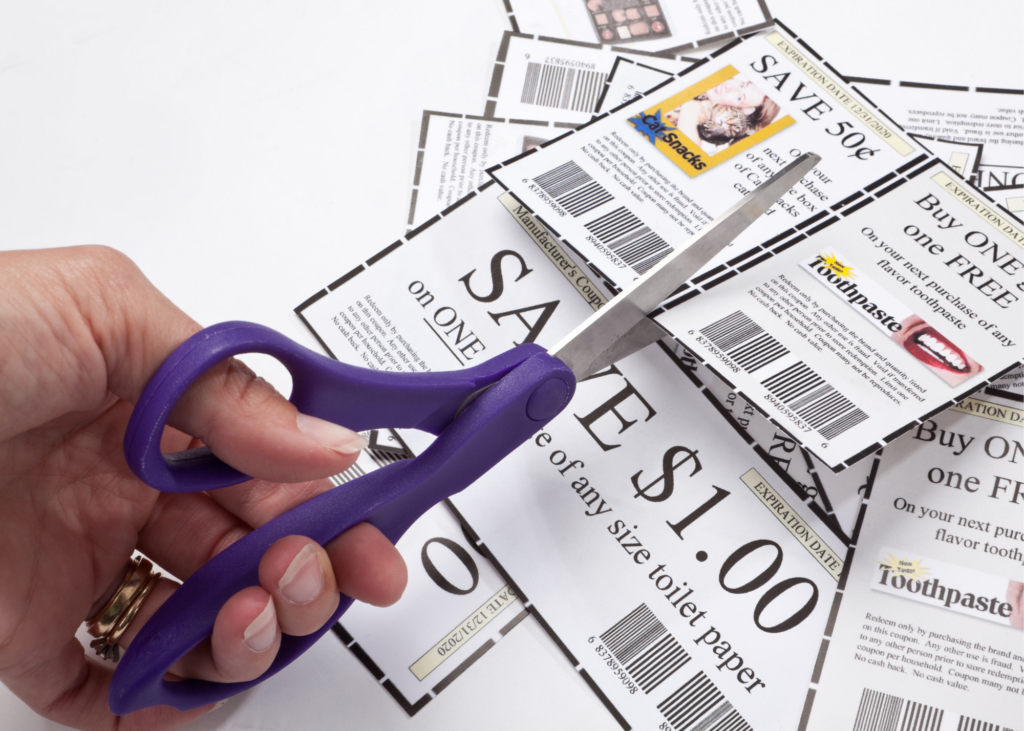
Even if you don’t get the Sunday paper delivered to your door, you can check out all of the deals and savings opportunities by checking the website of your favorite store.
They almost always have their weekly ad listed online!
5. Make a list (and stick with it!)
Before you even step foot in the store, make a list of everything you need! Knowing what you need to buy will minimize the chance of you spending money where you don’t need to.
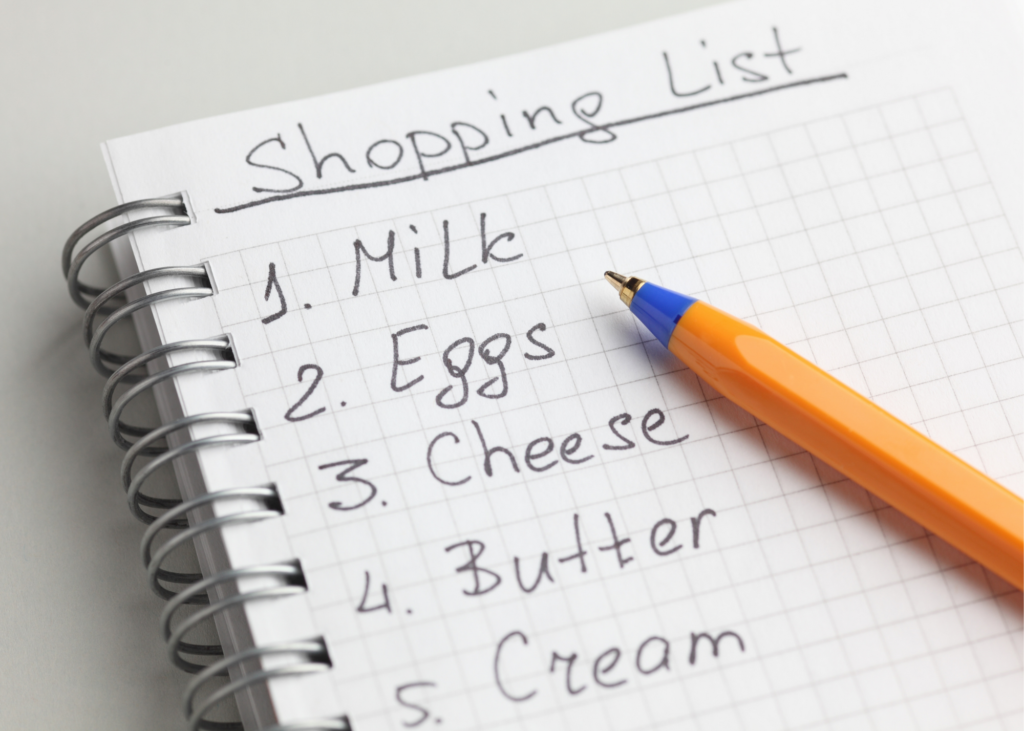
And when you’re checking off the items on your list, do your best not to wander or meander through the aisles.
You never know what will tempt you in the snack section!
6. Buy bulk if you have the space
It isn’t always practical to buy in bulk, but if it makes sense, it can save you a good amount of money.

You can find large packages of paper goods at stores like Target and Walmart, but if you’re really looking to save, consider joining a wholesale club like Costco or Sams Club.
I love buying big packages of frozen chicken breasts to have in our house and with the cost of meat these days, it saves a decent amount of money! I also buy bulk goods that never really expire (like beans, rice, etc.).
But remember, buy bulk only if you know the food won’t spoil or go to waste. And make sure you have enough room to store it all!
7. Shop seasonal
If the price of your produce seems outrageously high, it may be out of season! Typically, if food is out of season, stores will jack up prices because it costs more to import it from year-round growing regions.
Here’s a guide to let you know when to buy your produce favorites!
Spring
- Broccoli
- Kiwi
- Pineapples
- Mushrooms
- Lettuce
- Spinach
Summer
- Bell Peppers
- Blackberries
- Blueberries
- Cherries
- Mangos
- Raspberries
Fall
- Grapes
- Pumpkin
- Sweet Potatoes & Yams
- Pears
- Onions
- Cranberries
Winter
- Avocados
- Grapefruit
- Oranges
- Potatoes
- Winter Squash
- Brussels Sprouts
*see the full list here.
And if you really need out-of-season goods, don’t be afraid to buy frozen! These foods are frozen at peak freshness, so they have all of the nutrients and flavor you’ll find in fresh produce.
8. Check the unit price
One of the easiest ways to see if you’re getting a good deal is to look at the unit price.
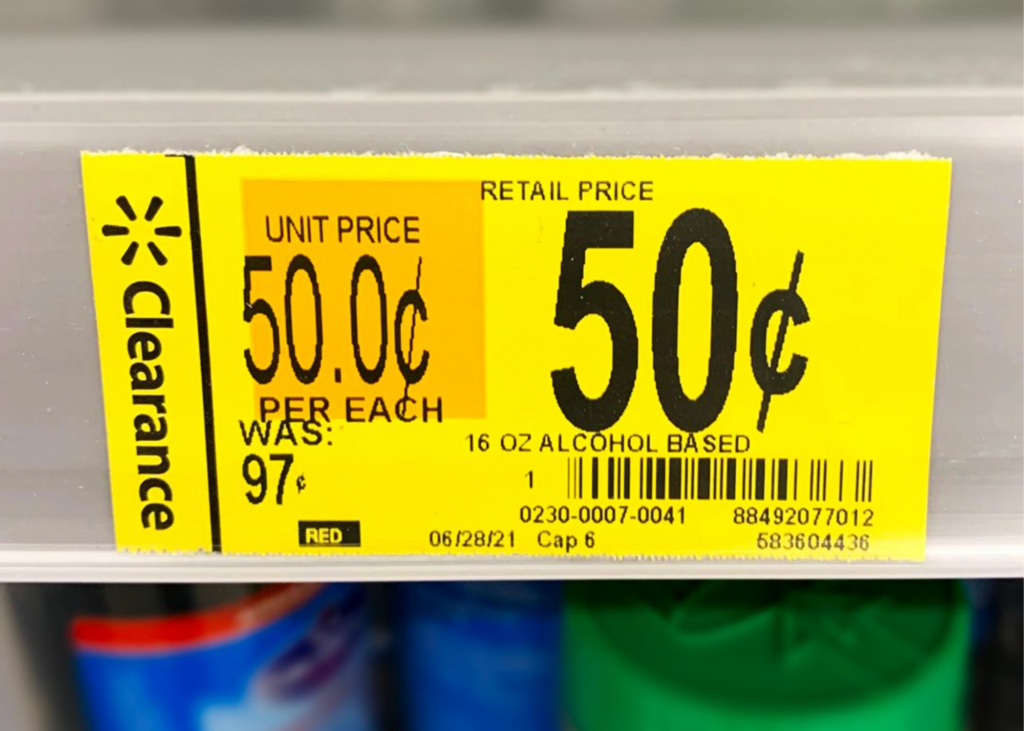
The unit price is listed beside the full price of the item (and will actually say unit price underneath).
So if you’re trying to see if buying the 200-pack of napkins is truly more budget-friendly than the 100-pack, the unit price will give you a quick answer.
9. Use a cash-back program or a cash-back credit card
These days, there are plenty of rebate apps (like Rakuten or Ibotta) that can help you save money over time. While you may only save a small amount per item, those savings can add up!
Another way to put money back into your account is by purchasing your groceries with a cash-back credit card.
Check with your bank to see if your card offers cash-back rewards, and if it doesn’t, consider making a switch!
10. Pay attention to where you shop
I know that it might be more convenient to shop at the store closest to your home, but if it isn’t a store that routinely has lower prices, you could be paying way more than you need to.

If you’re looking for paper goods or pantry staples, try to find a Target or Walmart near you.
I’ve also noticed that Trader Joe’s has great prices on almost everything in the store (which is why they don’t have sales!), and if you’re going the bulk route, Costco and Sams Club won’t disappoint.
Unsure if your go-to store is really costing you extra? Spend some time browsing the aisles of local competitors. You might be surprised what you can find!
Do you have other grocery store shopping tips you’d like to share? I’d love to hear your thoughts because every dollar saved counts!
From my home to yours,
Jill
grocery store shopping tips

